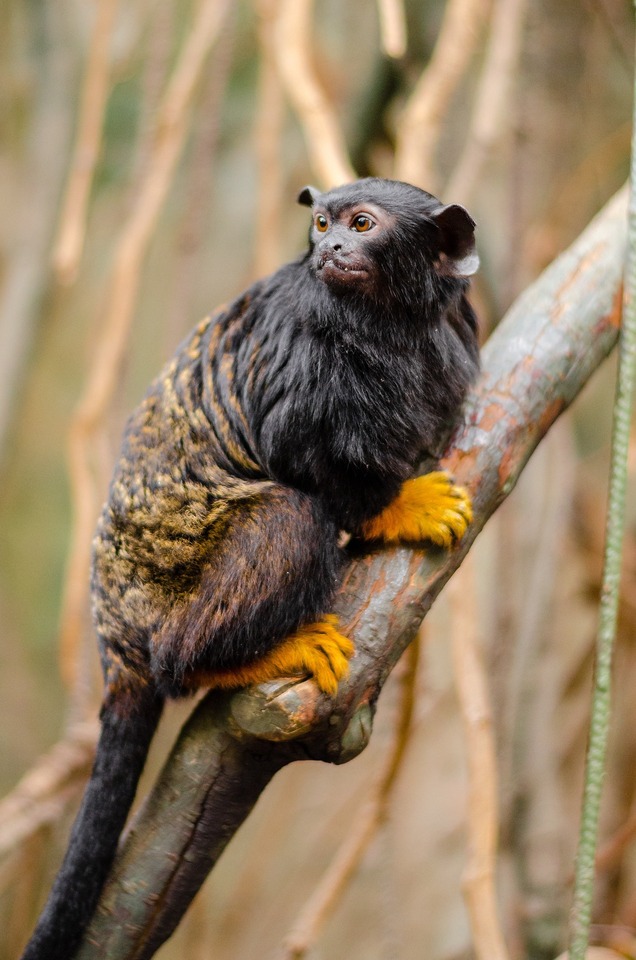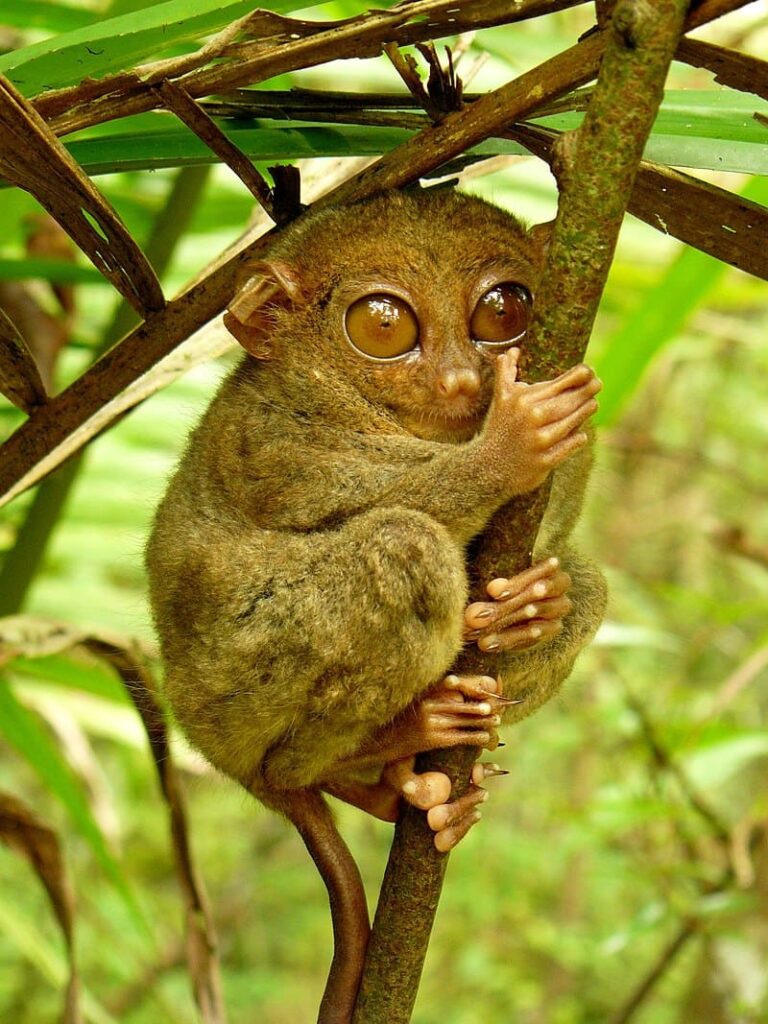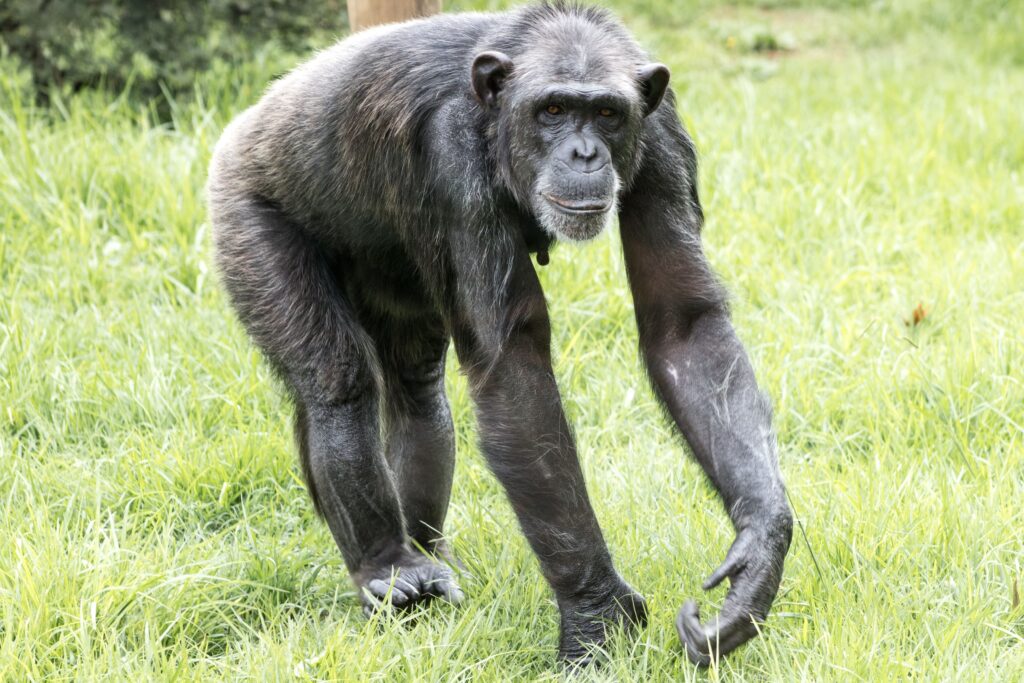
Some general information on primate locomotion
The vast majority of primates live in tropical climates and forest environments. Some species also live in savannah-type environments or at higher altitudes. This is the case, for example, of the Barbary macaque, which lives in the Atlas mountains and on the promontories of Gibraltar. We can also mention the Roxellan Rhinopithecus, which lives on the Tibetan plateau, in a sometimes snowy environment. If you’d like to find out more about primates, we invite you to read our previous article. Thus, primates live both arboreal and terrestrial lives. This diversity of occupied environments leads to great diversity in primate postural-locomotor repertoires. Unlike most other mammals, primates can practice different modes of locomotion within the same repertoire. 32 posturo-locomotor modes have been identified, and primates are commonly grouped into ten major locomotor categories:
- Vertical jumpers and climbers
- Brachiators
- General arboreal quadrupeds
- Semi-terrestrial quadrupeds
- Land quadrupeds
- Quadrupedal knuckle-walking
- Slow climbers
- Claw climbers
- Biped
- Some American primates also have a prehensile tail, which they use as a fifth limb to suspend and stabilize themselves in trees.

These different locomotor modes are characterized by anatomical adaptations to the skeleton. However, we have to be careful when we talk about these adaptations. Indeed, primatologists now know that it’s not necessarily the time spent on the main mode of locomotion that best reflects skeletal adaptations. For example, the chimpanzee is defined as a knuckle-walker according to the broad categorization mentioned above. Nevertheless, most of the chimpanzee’s skeletal adaptations are not for this quadrupedal walking, but for suspension and vertical climbing, which it also practices. Categorizing posturo-locomotor modes helps us to define them. Nevertheless, it’s important to bear in mind that each primate species has its own way of doing things.
In the rest of this article, we’ll take a look at some of these modes of transport.
Vertical jumpers and climbers
Tarsiers, for example, use this mode of locomotion. The term “jumper” comes from their movement through the trees and on the ground in successive leaps. They can leap a distance that is up to forty times greater than their size! The term “vertical climbers” derives from the fact that tarsiers climb trees vertically, straightening their backs and spreading their limbs to cling to the trunk. The main adaptations to this type of locomotion are found in the postcranial region, and more specifically in the lower limbs, which are particularly elongated. In fact, they are 1.5 times the length of the trunk, providing support for propulsion during jumps.

Brachiators
Brachiation is defined as bimanual progression over several meters between two structures without using any other type of locomotion and without using the support of the tail or hind limbs. This type of locomotion is used by gibbons and siamangs, for example. Brachiator upper limbs are particularly long and strong. Their wrist and shoulder joints are also mobile. This type of locomotion enables them to move very quickly through the canopy – up to 56 km/h for gibbons!
Quadrupedalism
As mentioned at the start of this article, there are three main modes of quadrupedalism: general arboreal quadrupeds, semi-terrestrial quadrupeds and terrestrial quadrupeds. They are all characterized by walking on all four limbs, supported by hands and feet. Quadrupeds can be digitigrades (supported by the toes of the hands and feet), semi-plantigrades, plantigrades (supported by the palms of the hands and feet) or a mixture of both! Baboons, for example, are digitigrade for their hands, but semi-plantigrade for their feet.
The distinction between these modes of quadrupedal locomotion depends on the environment in which they are practiced. Generalist arboreal quadrupeds, such as sakis and cercopithecines, move by walking or running on branches. Semi-terrestrial quadrupeds spend a variable proportion of their time in trees, and come down to the ground to feed. Macaques in general are a good example. Finally, terrestrial quadrupeds live mainly on the ground. Baboons are a case in point.

Quadrupedal locomotion on the knuckles of the hands or knuckle-walking
Knuckle-walking is a form of locomotion that involves moving around on all four limbs, supported by the backs of the phalanges on the upper limbs. This type of movement is practiced by chimpanzees, bonobos and gorillas, for example. This requires adaptations to the bone structure of the wrist and metacarpals, which are more elongated and robust.

We hope you enjoyed this article! Feel free to ask us questions and give us feedback on the blog. You can also contact us by email. You can also follow us on Instagram, Facebook, Twitter, TikTok, LinkedIn and YouTube!
We would like to thank François Druelle, a research fellow specializing in primatology, for his review of the first version of this article.
See you soon,
The Prehistory Travel team.
Bibliography:
[1] Berillon G., Marchal F., “Les multiples bipédies des hominidés”, Pour la Science, vol. 330, 2005.
[2] Grimaud-Hervé et al, Ancestor stories. The great adventure of prehistoryed. Errances,5th edition, 2015.
[3] Kimura, “Habitual locomotor types and the shape of lower leg bones in primates, especially in hominoids”, Revue de primatology [en ligne], 12|2021.
[4] Michilsens et al, “Functional anatomy of the gibbon forelimb: adaptations to a brachiating lifestyle”, J Anat, 2009 Sep; 215(3): 335-354.
[5] Rasmussen et al, “Tarsier-like locomotor specializations in the Oligocene primate Afrotarsius”, Proc. Natl. Acad. Sci. USA, vol. 95, 1998
[6] Springer C., Andrews P., The complete world of Human evolution, ed. Thames & Hudson, 2011
[7] Tarrega-Saunders et al, “Knuckle-walking and behavioural flexibility in great apes”, Revue de primatology [en ligne], 12|2021






